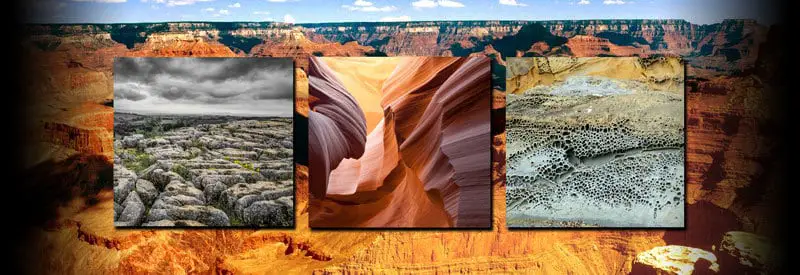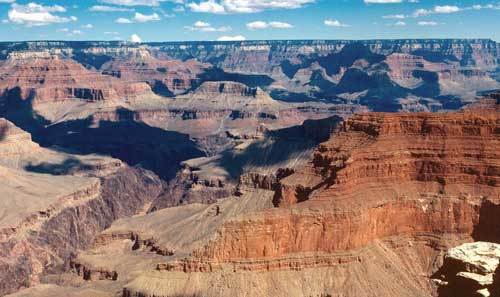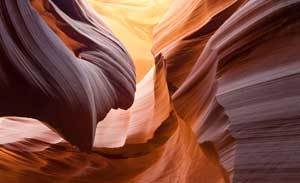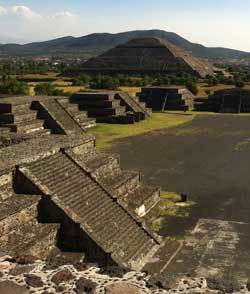Weathering – What It Is, The Different Types, And How It Relates To Erosion

Our physical environment is heavily impacted by prolonged exposure to the elements of weather & climate. This phenomenon is known as weathering. We examine what it is and its impact on the environment.
Weathering is defined as the slow and systematic breakdown of stone, soil, and vegetation like wood caused by contact with elements in the atmosphere, such as rain, heat, cold, and wind. Weathering also directly impacts artificial or human-made objects and even the human body, specifically the skin.
It slowly takes place on a daily basis and probably right in front of your eyes without you even being aware of it. Weathering is a slow but persistent process, which can result in irreversible damage to both your bodies and the environment.
But weathering is not the only culprit. Another process called erosion can also wear down and change the environment over time. However, it must be important to note that weathering and erosion are not the same phenomena.
Although they often get confused with each other, weathering and erosion are two entirely different processes. We will highlight these differences later on in this article, as well as how they relate to each other.
Before we delve into the details of how and why weathering takes place, as well as its relationship with erosion, we need to define what weathering is in the first place.
Weathering Definition

Weathering is the slow and systematic breakdown of stone, soil, and vegetation like wood as a result of contact with elements in the atmosphere such as rain, heat, cold, and wind. Weathering also impacts artificial (human-made) objects and even our human bodies directly.
Sustained periods of exposure to any one of these elements in the atmosphere, or a combination of them, will result in a weakening and eventual breakdown of most objects.
The Difference Between Weathering And Erosion
Since the causes of weathering include erosion, it needs to be addressed and clarified before we can examine the different types of weathering.
Erosion can be a direct result of weathering and have the same impact on the environment. Atmospheric conditions (weather) can also be responsible for this occurrence. As a result, it is essential to understand how it differs from weathering to eliminate any confusion.
The most significant difference between weathering and erosion rests on the location where the event takes place. In the case of weathering, the object gets weakened and broken down while it remains in the same position.
In the case of erosion, the object is weakened and broken down by moving fragments or weathered parts of the object away from its original location.
As we discuss the causes of weathering, the differences between the two processes will become much clearer.
What Causes Weathering?
There are a variety of ways in which the weathering breakdown process takes place. These various processes will determine the time, as well as the extent to which weathering occurs.
For example, the time it takes for different objects to break down completely will depend on individual variables. This can include the object's characteristics, the amount of time it is exposed to the elements, and the types of weather variables it is exposed to.
Weathering can broadly be divided into two categories:
- Mechanical (Physical) Weathering
- Chemical Weathering
Within these two sections, different processes and atmospheric elements are working in their unique ways to weaken and break down objects on the surface.
By examining how these different processes work within each of the two main categories, you will be able to get a much better understanding of how the various weathering processes work.
1) Mechanical (Physical) Weathering

Mechanical weather is the weakening and breakdown of objects like rocks, bricks, and concrete through a process called abrasion. (Abrasion is the process that use friction to break down an object through rubbing, scratching, and chaffing.)
A good example to demonstrate this process is the weathering of a rock which is exposed to the elements 24 hours a day. In this case, more than one element is involved in the mechanical weathering process.
Frost Weathering
During a rain shower, moisture is able to infiltrate small cracks within the rock. In regions where the temperature drops to below zero, the moisture within the rock freezes, which causes the cracks in the rock to expand.
Continuous freezing and melting of the moisture within the rock force the small cracks to keep on expanding and contracting. This leads to the weakening of the rock's structure, which will cause it to break apart over time.
Thermal weathering
Regions experiencing extreme temperatures of heat and cold, like deserts, are prone to another form of physical weathering.
When a rock is exposed to extreme heat, the outer layer of the stone may expand at a faster rate than the inside. Similarly, during the cold nights, the rapid cooling down of the rock causes the outer layer to contract more quickly than the inside.
In the short-term, this will cause flaking and erosion of the outer layer of the rock. In the long term, however, the constant stress on the rock may cause it to break apart completely.
Other elements, including biological agents, are also responsible for mechanical weathering, but since we are focusing on weather-related weathering, we will disregard these additional factors for the purpose of this article.
2) Chemical Weathering
Unlike mechanical weathering, where abrasion is the primary factor, chemical weathering takes place as a result of slow changes in the composition of an object, primarily as a result of interaction with water.
For example, carbon dioxide within rainwater can cause a reaction within a rock to form carbonic acid, which dissolves some of the minerals inside that forms part of the structure.
Carbonation And Dissolution
As previously mentioned, carbon dioxide in the rainwater can infiltrate a rock and combine to form a mild carbonic acid, which can dissolve some minerals within the rock.
To find out more about the importance of carbon dioxide, its impact on the weather and climate change, read the in-depth article here.

Changes in the atmosphere due to the excess release of fossil fuels and volcanic eruptions lead to the buildup of large volumes of gases such as sulfur dioxide and nitrogen oxide.
These gases combine with water drops in the air to form sulfuric and similar acids. These highly toxic acids cause a much faster deterioration of rock, bricks, and concrete due to solution weathering.
Oxidation
This form of weathering occurs when water moisture interacts with various metals within an object, which results in an oxidation process (better known as rusting) which weakens the item to the point where corrosion causes it to break apart eventually.
For example, rocks rich in iron also interact with water, which leads to oxidation, resulting in corrosion and the potential breakup of the rock over time. The reddish color that is so synonymous with rust is clearly visible in rock fragments that went through this process.
Hydration
Porous rocks and similar objects with microscopic openings and cracks allow water to infiltrate and saturate them, increasing the total volume of the object.
A fully hydrated object causes stress on the already rigid structure of a rock or artifact. This can lead to a form of mechanical weathering where the additional stress can cause an object to fracture.
This increase in volume is mainly due to water interacting with a substance within a rock to change into another substance with an increased volume. Examples include anhydrite turning into gypsum and hematite turning into limonite.
Although classified as erosion, some forms of erosion are caused by weather elements and are the direct result of weathering. Therefore they are relevant and need to be included. After all, they are part of the overarching weathering process due to the weather.
3) Wind Erosion
One of the weather elements responsible for some of the most extensive weathering and eroding the landscape is wind erosion.

In short, wind erosion is the removal of loose or partly loosened soil and sand from one location to another. It can take place in areas where natural or human-made weathering of the landscape created loose and exposed particles on the surface.
It is a very natural process that is forever changing the landscape in dry and sandy areas like deserts and semi-arid regions.
What is more disconcerting is the removal of soil and sand that had been exposed due to human interference. Activities like deforestation, the removal of vegetation from coastal areas, and along riverbanks are now exposing large areas to wind potential wind erosion.
This causes long-term damage to the environment as topsoil necessary for plants and crops to grow is carried away by the wind. The removal of soil from areas along riverbanks and coastal areas allows water to further erode and change entire landscapes.
You may not realize just how important wind is and that it is one of the main driving forces of weather and responsible for reshaping entire landscapes. If you need any convincing, just read about gale force winds and the destructive power of wind in a tornado or cyclone.
The Effects Of Weathering
You see the effects of weathering all around you without even realizing it. When you look at a mountain with its foothills, you look at the effects of weathering. If you look at the stunning rock formations in the desert or at the coast, you are also viewing the effects of weathering.
Although we can see the effects of weathering in broken or worn-down stones and rocks, as well as human-made objects like bricks and concrete in worn-down infrastructures and ruins, the best example of weathering is the sight of a huge mountain with its foothills.
Transformation And Molding Of The Landscape
The typical image of a mountain we see today is the result of millions of years of weathering. Tectonic plate activity or magma movement causes a piece of rock or magma to be pushed up high above the earth's crust.
Mountains
The massive mountain that just formed is still just a piece of rock towering into the sky. It is immediately exposed to the element, however, causing all the different types of weathering we discussed in earlier sections to start "eating away" at it.
As rocks are weakened and fragmented at the surface on top of the mountain, pieces started rolling down the sides while erosion breaks them down even further. At the bottom, they accumulate and are weathered and broken up even further.
Over time, a combination of erosion and infiltration & breakdown by biological agents turns the small fragments of rock into the fertile soil/sediment that forms the green foothills we find today at the bottom of a mountain. This whole process can take millions of years or more to complete.
Valleys and Canyons
Weathering can occur on relatively flat surfaces as well. Many of the valleys and canyons we see today are the result of weathering and erosion that slowly created their own path through the rock, leaving some spectacular landscapes behind.
Not all surfaces are created equal. This is very evident as vast flat regions got exposed to weather elements long ago. Rocks that were more vulnerable to weathering than their neighbors got exposed fairly quickly (in geological terms).

This may be due to the rock's porous structure or the fact that it contains metals/minerals that combine with rainwater to weaken its structure. These rocks weaken and weather away over time, which left indentations all over these flat regions with the help of wind erosion.
When these areas received a fair amount of rain, especially on a very slight incline, the rainwater would have looked for the easiest runoff area possible. As the water followed the path of least resistance, the weathered indentations on the surface became an easy target.
The water followed a path from one indentation to another as it started creating its own runoff pathway. Over time these paths became more established as the water began to erode the rock underneath it away.
Today, we see the result of millions of years of the continuous process just described, slowly but persistently craving out the landscapes we are familiar with. It is an example of the power of weathering and erosion consistently and repeatedly applied over a million years.
Old Infrastructure And Ruins
The same type of weathering that is responsible for the eroding and breakdown of stone, also affect the infrastructure of buildings.
Bricks, concrete, and wood commonly used in the construction of buildings are also subject to both mechanical and chemical weathering. Human-made building blocks of solid infrastructures like brick and concrete are even more susceptible to weathering than rock.
As a result, weathering takes place much faster on these objects than on stone. If not properly treated and maintained, bricks and concrete can start to show signs of weathering over a few decades and fragment and completely break down over a couple of centuries.
You see the evidence of this accelerated form of weathering when you visit ghost towns in rural areas that were abandoned decades or centuries ago. You will quickly notice the various degrees of weathering, depending on the types of building material that were used.

On the other hand, when you visit the ancient ruins build by civilizations that existed thousands of years ago, you will be surprised at how well some of these infrastructures stood the test of time, even in conditions conducive to weathering and erosion.
Because these ancient civilizations used natural rock and stone to build their structures, some of which were huge and detailed, it was able to withstand the weathering and erosion processes much better than today's modern building materials.
Just look at the pyramids of the ancient Mayans in Mexico and Central America, as well as the structures built by the Incas in Central America. Their well-preserved ruins are a testament to their resilience to extensive weathering and erosion over thousands of years.
Weathering Effects On The Human Body
You all would have heard an elderly person referred to as having a "weathered face." The same applies to people who are unfortunate enough to "living it rough" on the streets.
Even the human body doesn't escape the weathering effects of the elements, specifically those people who are directly exposed to the elements throughout the day. And it is our bodies' skin that gets hit the hardest.
Over time, continuous exposure to sun and dry air cause a variety of skin conditions. One of the most common effects of years of sun exposure is severely wrinkled & dry skin that occurs at different ages, depending on the individual and amount of time spent in the sun.
As we all know, there are more dangerous consequences for sun exposure as well. Sunspots, cracked skin, and more severe conditions like solar keratosis and skin cancer are all the result of extensive exposure to the sun.
Continuous exposure to weather elements affects other parts of the body as well, but then we start moving away from the weathering process, so that is not relevant to this article.
Conclusion
You will now have a clear understanding of what exactly weathering is, how it is formed, and how the different types of weathering work together to weaken and break up an object.
You will also understand why weathering and erosion are so closely related and often get confused with each other. Although they are not the same process, they often go hand-in-hand, and in many cases, the weather creates the ideal conditions for erosion to take place.
I trust this post was able to answer any questions you might have regarding weathering and how it occurs.
Never miss out again when another interesting and helpful article is released and stay updated, while also receiving helpful tips & information by simply clicking on this link .
Until next time, keep your eye on the weather!
